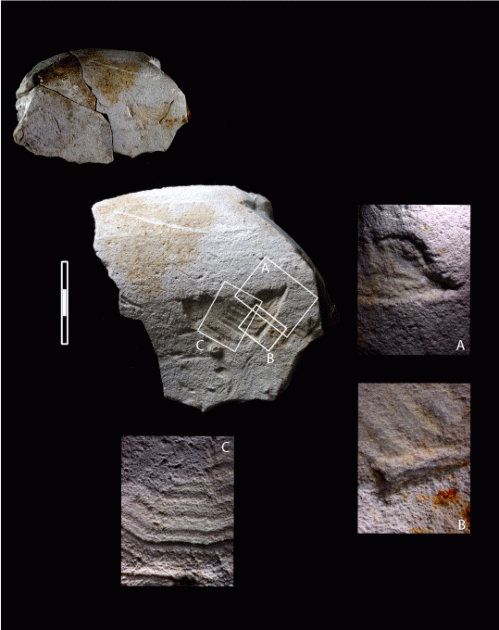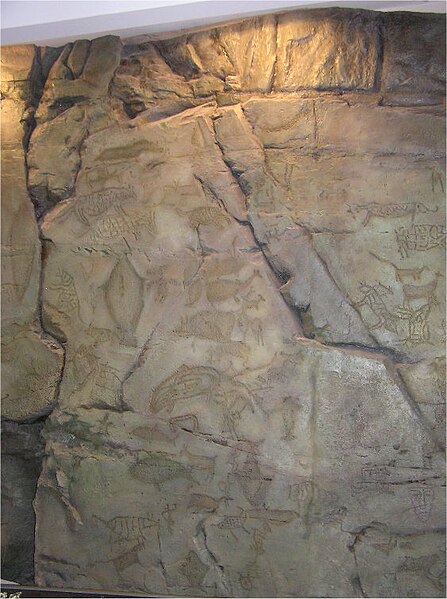A fascinating story this one indeed: the European bison or wisent has some ancestry related to the cow, evident in its mitochondrial DNA. This was already known but what wasn't known is that this distinct "hybrid" species of bison dated to the Upper Paleolithic. Thanks to the excellent records of anonymous prehistorical biologists who recorded them in Southwestern European rock art with great detail and naturalism, modern researchers have realized that the wisent, with its bovid heritage, existed already in the Upper Paleolithic. Ancient DNA recovery has now confirmed the artist's impression.
Julien Soubrier et al. Early cave art and ancient DNA record the origin of European bison. Nature communications, 2016. Open access → LINK [doi:10.1038/ncomms13158]
Abstract
The two living species of bison (European and American) are among the few terrestrial megafauna to have survived the late Pleistocene extinctions. Despite the extensive bovid fossil record in Eurasia, the evolutionary history of the European bison (or wisent, Bison bonasus) before the Holocene (< 11.7 thousand years ago (kya)) remains a mystery. We use complete ancient mitochondrial genomes and genome-wide nuclear DNA surveys to reveal that the wisent is the product of hybridization between the extinct steppe bison (Bison priscus) and ancestors of modern cattle (aurochs, Bos primigenius) before 120 kya, and contains up to 10% aurochs genomic ancestry. Although undetected within the fossil record, ancestors of the wisent have alternated ecological dominance with steppe bison in association with major environmental shifts since at least 55 kya. Early cave artists recorded distinct morphological forms consistent with these replacement events, around the Last Glacial Maximum (LGM, ∼21–18 kya).
The depictions of both types of bison are rather distinct but it seems nobody had noticed the difference until now, as the researchers explain in this article.
 |
| Fig. 1 - (a) Reproduction from Lascaux cave (France), from the Solutrean or early Magdalenian period (∼20,000 kya—picture adapted from ref. 53). (b) Reproduction from the Pergouset cave (France), from the Magdalenian period (<17,000 kya—picture adapted from ref. 54). |
The ancient wisents sequenced now carry a distinct mtDNA haplogroup, called "clade X", which is sister to that of modern wisents (all descending from just 12 survivors). This wisent macro-haplogroup forms a clade with that of bovine cattle (cows of all sorts, both taurine and indicine) but they are joined only at the root, suggesting that the hybridization event that created the wisents as distinct species is very old, just a bit more recent than the divergence of cow and bison.
So it is not random auroch hybridization but a very specific and very ancient episode of admixture between the ancestors of bisons and cows.
The two species appear to have distinct ecological niches:
The detailed records of the southern Ural sites allow the timing of the population replacements between steppe bison and wisent to be correlated with major palaeoenvironmental shifts, revealing that the wisent was associated with colder, more tundra-like landscapes and absence of a warm summer.
This pattern seems to correspond with the periods in which the two species are portrayed in rock art, as two of the researchers explain in this video (third part):
Post-statement: I must say that, on second thought, I'm not really convinced by the claim of wisent corresponding to colder periods. In fig. 1 above it is apparent that it is the steppe bison which corresponds to the last glacial maximum (LGM) in Southwestern Europe and not the wisent, which only shows up after the end of this coldest period.
I wonder if the researchers are explaining themselves well enough on this aspect or if it is a case of wishful thinking, maybe caused by different conditions in SW Europe (where the rock art is) and the Southern Urals (where most of the archaeogenetic and paleontological data comes from).
At the very least, judging on fig. 1, it would be the steppe bison the one corresponding with the coldest spell and the wisent the one corresponding to more temperate conditions. Can someone explain me what is going on here?























